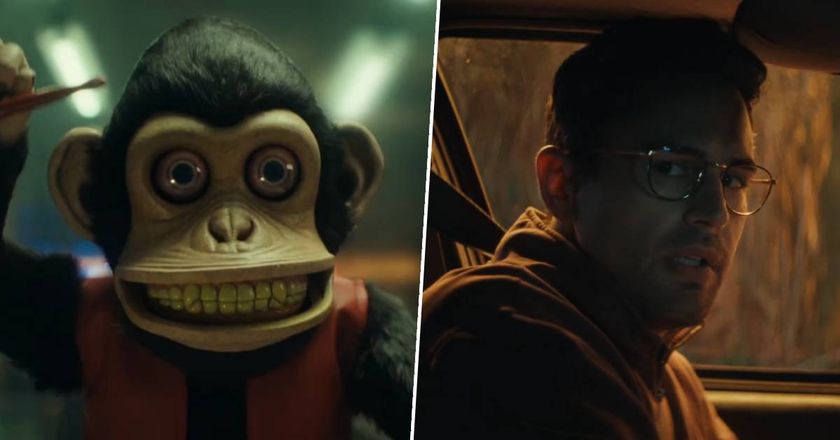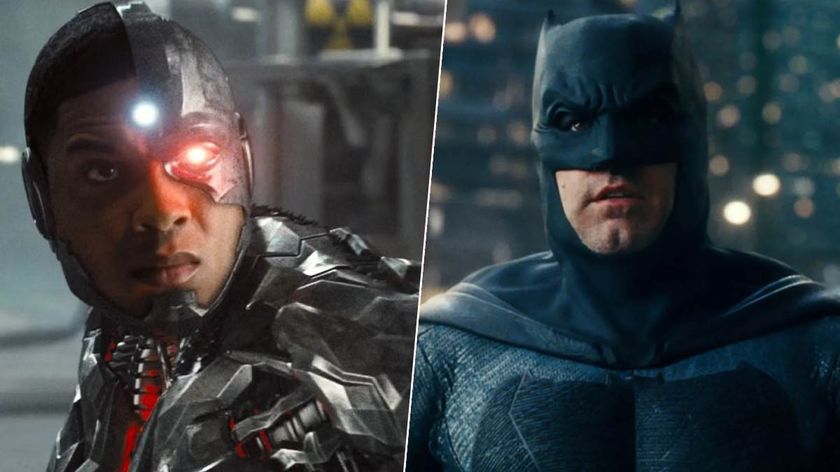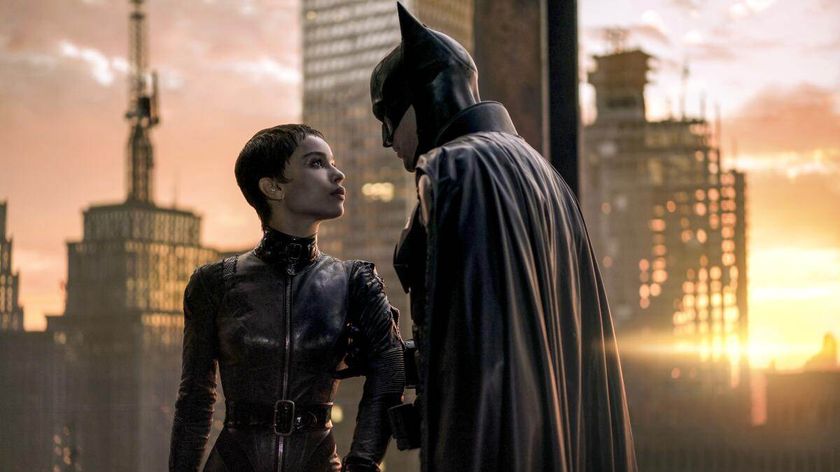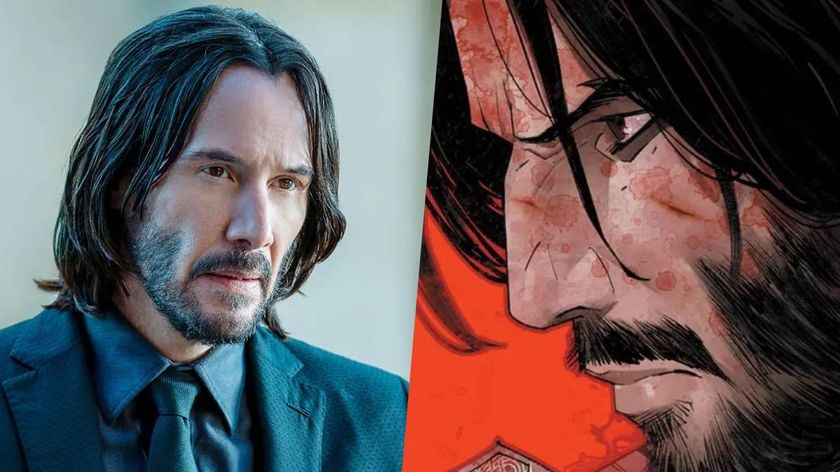9 Weird Ways To Fund A Movie
Stock floaters, car sellers, bingo gamblers and more...
Colin, the zombie movie made for £45 , is going to be hitting a cinema near you soon.
Which got us thinking about some of the other flicks throughout movie history with unusual budgets.
Behold, our list of some of the fantastic ways movie folk have funded their movies...
1. Lightning Jack (1994)
Budget: $20 million
And how would Sir like to pay?
Having failed to capitalise on the success of the Crocodile Dundee phenomenon ( Almost An Angel , anyone?), Paul Hogan went all Gordon Gekko to raise the funds for his outlaw-from-the-outback Western.
Since no producer would stump up the dosh, Hogan created Lightning Ridge Ltd (named after his New South Wales home town) and floated the film on the Australian stock exchange.
What’s more, the satchel-faced star persuaded his mates to pour their cash into the project…
Money well spent?
Given the movie’s dismal box office, Hogan’s behaviour was rather like getting his friends to invest in a three-legged racehorse. That’s blind.
Lightning Jack is astonishingly unfunny.
Sign up for the Total Film Newsletter
Bringing all the latest movie news, features, and reviews to your inbox
Next: Carnival Of Souls
[page-break]
2. Carnival Of Souls (1962)
Budget: $30,000
And how would Sir like to pay?
With a few uncredited movie appearances under his belt, Harvey ‘Herk’ Harvey was so convinced he had the know-how to make films that he set about building his own private Hollywood in, er, Kansas.
Cooking up a story about a mysterious organ player and strange goings-on at an abandoned fairground with pal John Clifford, Harvey funded his sole excursion into the movie biz with the takings from his Chevrolet dealership.
To further cut costs, whenever a scene required a vehicle, Harvey would just grab one from the forecourt, creating the unsettling illusion of a US where everyone drives a Chevy.
Money well spent?
It’s pretty ragged but Carnival Of Souls is up there with The Evil Dead in the DIY horror stakes.
And it’s a thousand times better than Wes Craven’s big-money remake.
Next: Plan 9 From Outer Space
[page-break]
3. Plan 9 From Outer Space (1958)
Budget: $60,000
And how would Sir like to pay?
When he overheard that that a Baptist church wanted to make films based on the Good Book, angora-loving Edward D Wood Jr suggested the clergymen invest their savings in Grave Robbers From Outer Space , the resulting profits then being used to fund films about all four gospels.
Impressed with the pitch, the church folk made with the moolah on the conditions that would change the title and the entire cast be baptised.
While Wood happily accepted Christ into his life, the backers may have been tempted to take the Lord’s name in vain when they saw the resulting ‘masterwork’.
Money well spent?
Absolutely – with its cardboard gravestones, formidable dialogue (“Saucers? You mean the kind from up there?”) and lampshade UFOs, we love this film more than life itself.
Next: Easy Rider
[page-break]
4. Easy Rider (1969)
Budget: $340,000
And how would Sir like to pay?
Hollywood trembled when Henry Fonda’s wayward son Peter and ‘difficult’ Dennis Hopper announced they wanted to make a drugs ‘n’ motorcycles movie.
Of course, no one would ever finance such a thing – at least, they wouldn’t until the arrival of Bert Schneider and Bob Rafelson.
As Fonda explains: “Bert and Bob had invented The Monkees and they’d gotten rich and they had enough to help us make Easy Rider .”
This wasn’t the only time the Prefab Four gave indie films a leg-up – when Alex Cox made Repo Man , the money came courtesy of Mike Nesmith.
Money well spent?
Yes, if you consider that Hopper’s movie almost single-handedly created American independent cinema.
No, if you remember that it’s only any good when Jack Nicholson’s on screen.
Next: The Terror
[page-break]
5. The Terror (1963)
Budget: $0
And how would Sir like to pay?
Few people know how to squeeze nickels like producer/director Roger Corman.
When he wrapped The Raven early, Corman realised the sets would be up for another four days, and asked wannabe screenwriter Robert Towne to scribble a few scenes.
He then gathered up his apprentice helmers Monte Hellman, Peter Bogdanovich, Martin Scorsese and Francis Coppola and let them take turns at directing and editing.
Everyone was so chuffed to be working on a real, genuine movie, they didn’t care that Rodge the Dodge wasn’t paying them. And by the time the boys were through playing with their toys, he had another picture in the can.
Money well spent?
Incredible. Corman got an entire movie for nothing, and his buds got invaluable experience.
What’s more, Bogdanovich got more mileage out of The Terror by including excerpts from it in his 1967 picture, Targets .
Next: El Mariachi
[page-break]
6. El Mariachi (1992)
Budget: $7,000
And how would Sir like to pay?
Realising the $4,000 he’d managed to scrape together wasn’t going to get his Mexican gangster movie made, Robert Rodriguez sold his body to medical science, signing up to participate in the testing of a new cholesterol treatment.
Rodriguez’s time as a lab rat was far from straightforward – in return for his $3,000, the research company literally extracted a pound of flesh.
Even those days spent hanging around the ward weren’t wasted – besides finishing his script, he became friends with fellow patient Peter Marquardt, who he cast as El Mariachi ’s bad guy.
Money well spent?
Absolutely. Most young directors would sell their souls for the fast-track success El Mariachi brought Rodriguez.
Next: The Crying Game
[page-break]
7. The Crying Game (1992)
Budget: $1.5 million
And how would Sir like to pay?
Stephen Woolley and Nik Powell’s Palace Pictures produced some corking British movies ( Mona Lisa , Scandal ). However, due to some eccentric decisions (for example, making Absolute Beginners ), the company often teetered on the brink of bankruptcy.
Such was the case during the making of Neil Jordan’s gender-bending IRA drama, The Crying Game . Indeed, things got so bad that Woolley began financing the film with his credit card.
And when his flexible friend maxed-out, he’d head to the Palace-owned Scala Cinema, take the money directly out of the tills and then rush back to set to pay the crew.
Money well spent?
Box office success and Jordan’s Best Original Screenplay Oscar were cold comfort to the people made redundant when The Crying Game overspends led to the collapse of Palace Pictures.
Next: Roger & Me
[page-break]
8. Roger & Me (1989)
Budget: $160,000
And how would Sir like to pay?
Before he created TV Nation , Michael Moore focused his efforts on bringing General Motors CEO Roger Smith to Flint, Michigan, to show him the effect of plant closures on the director’s hometown.
Moore was on $98-a-week benefits when he shot the movie, so how did he fund it? With $35,000 from Channel 4 and his weekly winnings from Flint’s bingo halls.
The reward for Moore’s ambition was a distribution deal with Warner Bros that made Roger & Me the highest-ever grossing non-fiction film and Moore so famous, he appeared as an answer on Jeopardy .
Money well spent?
The emergence of the amiable Moore, the rebirth of documentary and – that rarest of things – genuinely amusing satire.
We’d have been happy to stump up the cash ourselves.
Next: Inchon
[page-break]
9. Inchon (1981)
Budget: $46 million
And how would Sir like to pay?
Ever wonder why there aren’t many films about the Korean War? Watch Inchon and wonder no longer. The movie is memorable only for starring Laurence Olivier and being financed by Moonies-founder Reverend Sun Myung Moon.
The fact everyone was paid in cash suggests this wasn’t yer average studio shindig.
Money well spent?
Sure, if only because it stopped another sub-genre of US war film full of loss-of-innocence sermonising.
Like This? Then try...
Sign up for our free weekly newsletter here .
Follow us on Twitter here .
The Total Film team are made up of the finest minds in all of film journalism. They are: Editor Jane Crowther, Deputy Editor Matt Maytum, Reviews Ed Matthew Leyland, News Editor Jordan Farley, and Online Editor Emily Murray. Expect exclusive news, reviews, features, and more from the team behind the smarter movie magazine.

















